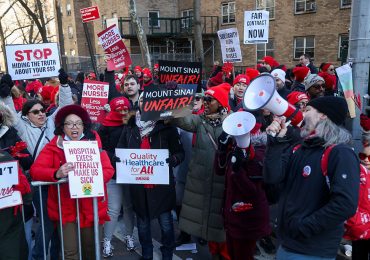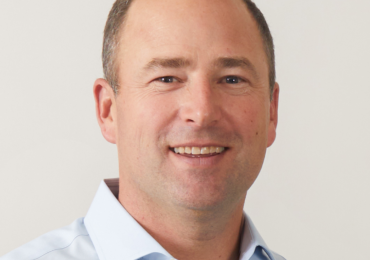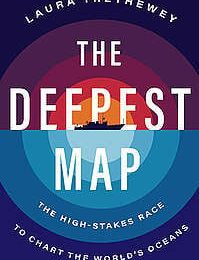If you follow along with my rantings on THCB, Twitter and Linkedin you’ll know that I am unhappy with America’s growing inequality, both in wealth and income. Now, there are a few signs that so long as we have full employment the income picture for the lowest paid is getting a little better. But wealth inequality is clearly not getting better.
You may remember this video explaining wealth inequality. Worth a watch if you haven’t seen it.
Well that was made in 2011. Back then Elon Musk was barely a billionaire, and more than a decade of massive stock market appreciation later, we know that the rich have gotten a lot richer, and their taxes went down following the Trump tax cuts in 2017.
Meanwhile, something similar has been going on in health care. The health economy has amazingly not taken much more of the overall economy since 2010. It went from 13% to 17% of GDP between 2000 and 2010 but has amazingly stayed around there–only popping up during the Covid recession and then heading down again. But the amount of money flowing into health care has stayed at a constant rate. And the American people continue to hate their experience with the health system.
They’re aren’t many selfless heroes. Payers, providers, doctors, pharma, equipment suppliers are all doing well. Wendell Potter has continued to show how health insurance companies have consolidated and gotten richer over the past decade plus. Big Pharma has managed the translation away from the mass market blockbusters of the 1990s to the high priced niche drugs of today, and now with GLP-1s is managing to keep those high prices. Despite lots of whining by the AHA, hospitals–which got massive handouts from the CARES Act during Covid, are all doing well again. But it’s always good to check in with the big non-profit systems. This isn’t the first time I’ve written about this. Early this year in a larger rant I wrote:
Over the last 30 years America’s venerable community and parochial hospitals merged into large health systems, mostly to be able to stick it to insurers and employers on price. Blake Madden put out a chart of 91 health systems with more than $1bn in revenue this week and there are about 22 with over $10bn in revenue and a bunch more above $5bn. You don’t need me to remind you that many of those systems are guilty with extreme prejudice of monopolistic price gouging, screwing over their clinicians, suing poor people, managing huge hedge funds, and paying dozens of executives like they’re playing for the soon to be ex-Oakland A’s. A few got LA Dodgers’ style money.
One of the things that the non-profits have to do is file the 990 form with the IRS. Among other things it shows how much money the organization’s executives make. Now it’s not like non-profit health system execs are the only ones coining it. In 2022 the biggest for-profit chain HCA’s CEO made $20m and 4 others there made over $5m. But at least HCA is a nakedly capitalist organization, and it pays taxes.
Recently one of the bigger hospital systems, UPMC put out a new 990. Unlike the previous version they put out, the 990 on their website is a photocopy that can’t be searched. Maybe that’s an accident, although any non-profit can put out an easily searchable document. For instance here’s the one from a teeny non-profit that I control. You can search the words “Reportable Compensation” and find that sadly I got paid zilch for my efforts. Not sure why UPMC can’t do the same.
Luckily for those of us who care, Propublica is a little more aggressive. They reproduced a searchable version. The way ProPublica did it was to download an xls from the IRS. One reason it’s worth looking at was that this year as opposed to 2022, UMPC didn’t post its compensation in $$ order.
I’m not knocking UPMC too much. Very few other big non-profit health systems put anything like as much effort into detailing who makes what amount on their 990s. They usually stop after the first 10-20 employees. UPMC goes down to 220+
So I copied and repasted the compensation information from ProPublica and did the necessary editing of 230 cells to be able to sort by compensation. You can find the spreadsheet here. (Feel free to copy & paste and do your own edits).
So what does it tell you?
UPMC had a CEO called Jeffrey Romoff who worked there his whole career. Romoff became President in the 1990s and took over as CEO in 2006. Using aggressive M&A, and some very sharp elbows including against the unions, Romoff essentially created the massive local monopoly that is the modern UPMC. His biggest moment in the national spotlight was when he went on 60 Minutes in 2011 and forgot his salary (he said it was $7m but then corrected it to $6m). Ten years later Romoff’s salary was a tad under $13m. If you are wondering, the median annual wage in the US in 2011 was $34,460. By 2022 it was $45,760. So the average salary increased 34% in nominal terms over that time. Romoff’s went up by more than 100%.
But that’s all well and good. Romoff retired at the age of 75 in August 2021 and was replaced by Leslie Davis.
So for the period covering July 2022 to June 2023, who was the highest paid person at UPMC?
Of course it was still Romoff who was paid $18m. That’s in addition to the $13m he was paid for the two months he worked in the 2021-22 financial year. And these massive deferred compensation sendoffs aren’t that rare. Commonspirit CEO Lloyd Dean got $35m to go away in 2022. What exactly these old men who were already very well rewarded need those huge paychecks for is unclear. But hey, would you turn it down if the board–which you’ve basically handpicked–offered it to you?
Who else got what? New CEO Leslie Davis got $12m (score one for increased pay for women, I guess!). Seven execs made more than $3m, another eight made more than $2m, and all told 52 made more than $1m.
Now because many of them are board members at various subsidiary hospitals, many of these are doctors and nurses actually doing clinical work. There are 256 on the list of which 104 are MDs and another 8 DOs. So about half are delivering clinical care and being compensated largely for that (I assume). There are also RNs running large departments, as well as many other business types and administrators.
Diane Holder is CEO of UPMC’s health plan, clocking in at a tad under $5m. The health plan is a big regional plan covering 4m people–mostly Medicare and Medicare. It’s nearly as big as 4.5m member Blue Shield of California, although its CEO has to scrape by on just over $3.5m.
Getting a little over $4m (in deferred comp) was Steven Shapiro the long time chief medical officer. Like Romoff he also wasn’t there at all in 2022-3, having left to USC Medicine in May 2021. Despite the move to the expensive Los Angeles housing market, he’s having to make do on only $3.5m there. But he also made $3.4m from UPMC in the June 2021-22 FY even though he wasn’t there then either! So he doubled up twice!
David Farner, an accountant who’s been at UPMC over 35 years, former CFO and now EVP, pulls down $3.8m, while Chair of the Board, Stanley Marks, who also runs the UPMC Hillman Cancer Center got $3.75m.
Rounding out the $3m club is neurosurgeon Fadi Sweiss, whose salary at $3.1m is up from $2.4m the year before. My assumption is that he’s a high throughput surgeon who makes the system a lot of money.
But it doesn’t stop there. As you head down the list there are lots more making money including a total of 52 making more than $1m. The lawyer who was the 118th on the list last year and the first to make less than $500K last year, now is 112th on the list. 117 make $500K or more.
Now the argument that will be made by UPMC (and was made on 60 Minutes by Romoff) was that as UPMC is a huge organization with $28 billion in revenue and about 100,000 employees, the total earnings of this group are a spit in the bucket. And they’re right. The total amount paid to all 256 execs is $212m or under 1% of revenues. Perhaps it doesn’t matter.
But recall that this is in Western Pennsylvania. Google AI told me that the average household income there is $100k, compared to $130K in California. So it’s not as if these salaries are because it’s an expensive place to live. In fact the local baseball team, the Pittsburgh Pirates, in 2023 had only one player making $10m a year and only nine making over $1m.
More importantly, every one of those top seven earners had large increases. $6m for Romoff even though he wasn’t there. Over $7m for Davies, although she had been in that job for more than a year. Nearly $1m for Holder. Over $200k for Farner even though he’s been there 35 years. $500k for Marks. $400K for Shapiro, even though he wasn’t there for two years and presumably was getting paid by USC as well. And nearly $700K or a 30% raise for Sweiss.
It’s not as if UPMC had a great year. Recently it laid off 1,000 people, having asked McKinsey to come in and help. The same day it was reported that they leased a new corporate jet. It’s hard to imagine using the jet saved money, compared to having execs travel using airlines like the rest of us peons.
Meanwhile UPMC reported a near $200m operating loss. Now in the big picture that loss doesn’t matter. UPMC has between $10 & $23 billion worth of assets. Much of it in cash invested in the stock market. Despite its monopoly position it makes more profit from managing its money than it does providing health care.
But while UPMC was losing money in recent months and years, other comparable systems have been moving into post-pandemic profit. So it’s at least worth considering for the very high penny that these execs are paid, are they getting the best value from them?
Given that the board is ⅓ from the university and the rest from local business leaders and lawyers, all mostly selected by insiders, it’s very hard to imagine they will hold anyone to account. After all, every other health system is doing it. And I’m not arguing that UPMC is in any way an anomaly. There are dozens of health systems across America, all acting more or less the same way.
Like UPMC many have more than 70% of their income coming from the taxpayer. The rest from local employers and employees essentially paying into what are essentially price-making monopolies. So like UPMC, the rest of American health care is more or less a taxpayer funded public utility.
Which leaves me with two questions.
Why do we as the taxpayer allow these non-profits to act as if they’re somehow totally different to government agencies?
And why is it OK for their senior executives to be paid so much more from one year to the next when they are already paid more than baseball players?
It would be nice to think that these huge non-profit systems are interested in reducing income inequality with all the impact that it has on health outcomes, rather than being a cause of it.
Leave a comment




